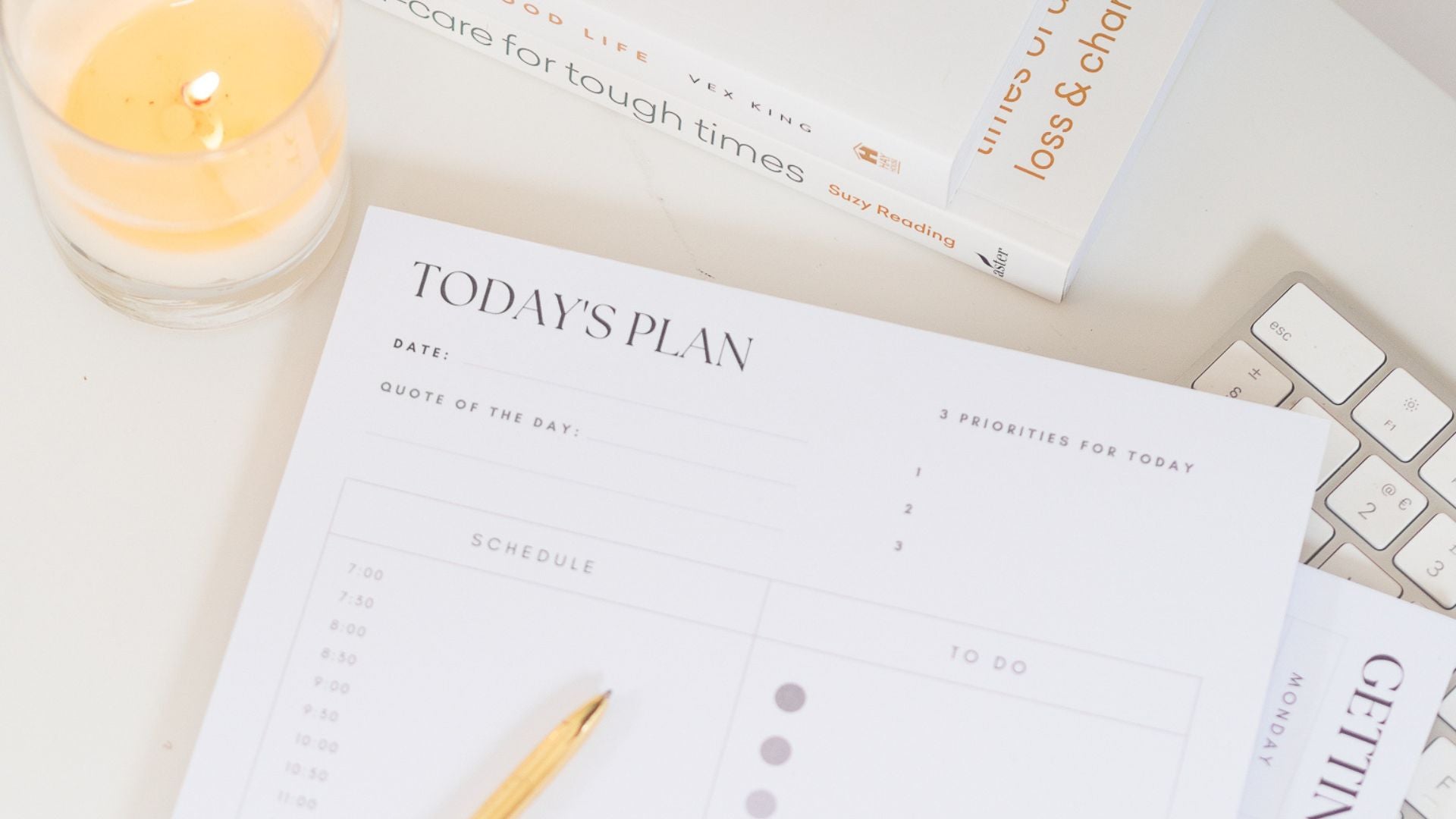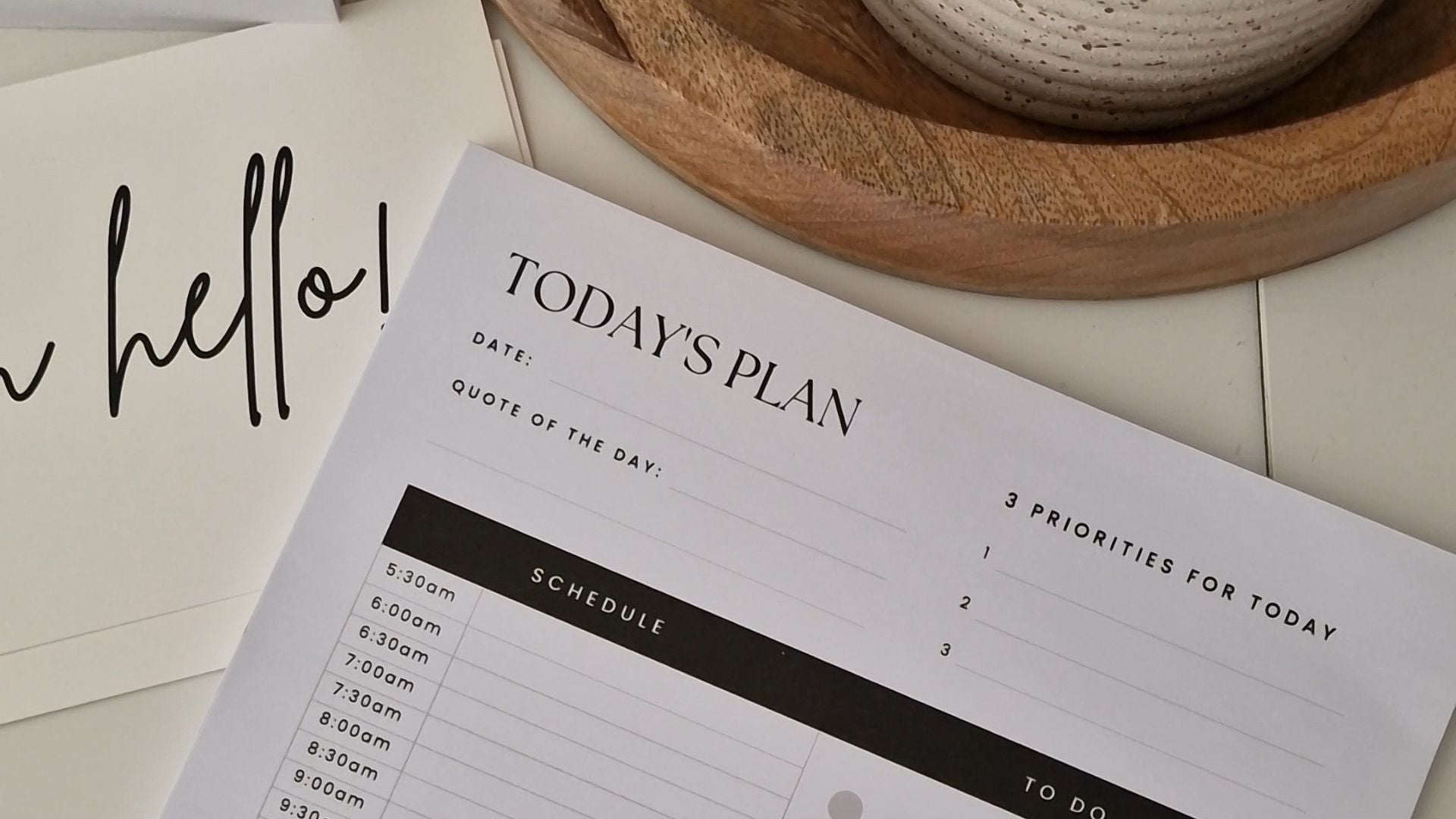
How to Get Organised to Plan Your Day (In Three Easy Steps)
If you're like many of us, the start of the year comes with a surge of motivation to be more organised and productive. The challenge, however, lies in knowing where to start. But don’t worry, in this post we’ll walk you through three simple steps to help you get organised and plan your day effectively.
Step 1: Identify Your Top Three Priorities
The first step in conquering your day is to identify your top priorities. These are the tasks that demand your immediate attention and have the potential to make a significant impact on moving forward with your goals. This might be tasks such as filming or scheduling content or completing a crucial report. It's essential to keep this list short—ideally, limit yourself to two or three top priorities. I’ve suggested three here as a maximum so that you can avoid feeling overwhelmed, but if you have a big project or something substantial happening, this might be one or two key priorities.
By honing in on these priorities, you set the stage for a focused and productive day. Remember, these are the game-changers, the tasks that will help you to move forward and contribute the most to your overall goals. Once you've identified them, make a note to keep them at the forefront of your daily planning.
Step 2: Jot Down Other Essential Tasks
While your top priorities take precedence, it's crucial not to overlook other tasks that also require attention. These are the secondary tasks—important but not urgent—that contribute to the overall smooth running of your day and life. Think of activities like making a quick call, responding to non-urgent emails, or scheduling appointments.
Create a comprehensive list of these secondary tasks and keep it handy. This ensures that as you go about your day, you don't overlook important but less critical activities. Having a clear distinction between your top priorities and other essential tasks allows for a balanced and well-rounded approach to daily planning.
Step 3: Embrace Time-Blocking
Now that you have a clear list of priorities and secondary tasks, it's time to allocate specific time slots for each. Enter the game-changer: time-blocking. This technique involves assigning dedicated time intervals to your tasks, ensuring you stay on track throughout the day.
Start by adding your top priority tasks to your schedule, and assigning specific time slots when you will focus exclusively on each. Once these are in place, seamlessly incorporate the other to-dos around them. A top tip: I usually set aside a time block (often an hour) to focus on these smaller tasks. It means I’m not distracted by trying to do them in between focused work.
Time-blocking not only enhances your productivity but also provides a visual representation of how your day unfolds.
Experiment with different time-blocking layouts to find what works best for you. Whether you prefer a digital calendar, a planner app, or the tactile satisfaction of paper and pen (if so, you might like the daily planner pad), the key is to choose a method that resonates with your personal style and preferences.
Effective daily planning is the cornerstone of productivity and success
By following these three easy steps—identifying priorities, listing other essential tasks, and embracing time-blocking—you'll find yourself better equipped to tackle your day with purpose and efficiency.
Experiment with different techniques, stay adaptable, and most importantly, find a planning routine that suits your unique preferences. Here's to a more organised, productive, and fulfilling day ahead. Happy planning!
Get blog post updates straight to your inbox here.



